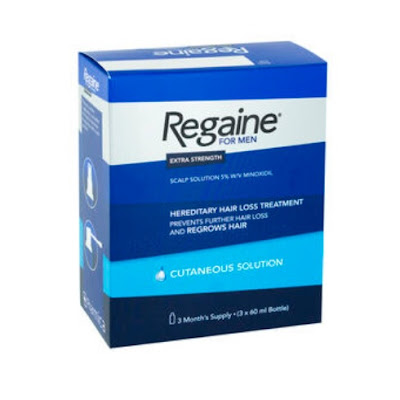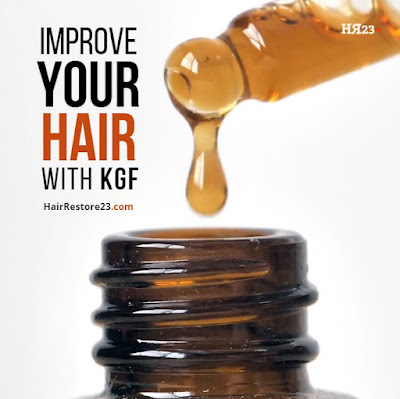Solutions for hair loss in young men
Why do some men have hair loss in their 20s?
Hair loss is a lot more common than you may think. Over two thirds of men will experience some form of hair loss by the time they reach the age of 40. And, for a lot of men, hair loss starts in their 20s.
It can be hugely demoralising for a young man, in his 20s, to start seeing clumps of hair in the bath plughole, or on his pillow every morning. These are two key signs that you could be losing your hair.
Most men do get through their 20s with a good head of hair, but there are some guys who enter their 30s having experienced major hair loss in their 20s. Male pattern baldness is down to your genetics, so if you have a history of hair loss in your family, then it's likely that it could happen to you.
What is the solution for hair loss in young men?
Unfortunately, there is not cure for hair loss. This may sound daunting, but fear not, because science and research has come a long way in recent years, which has given us a good range of hair loss prevention treatments and hair growth remedies.
We are much better placed to treat hair loss now than we were ten years ago, so if you are in your 20s, experiencing hair loss, then there is good reason to be optimistic. Slowing down hair fall, and even stopping it, is quite realistic, in today's times.
If you are experiencing hair loss in your 20s, then the first thing to do is to stay calm, and do not panic. Asses your hair, and your options. See a trichologist, if need be. The most important thing is to diagnose your hair loss type, and if it is male pattern baldness, then you can look for the most effective ways to treat it.
Here, we go through some effective treatment options that you should consider.
Minoxidil
It's likely that you'll be familiar with minoxidil under it's main brand name, Regaine (or Rogaine in the USA). Minoxidil is used to stimulate hair growth and to slow balding. It is most effective for younger people (under 40 years of age) whose hair loss is recent.
Minoxidil is most effective for baldness at the crown region, and has very little effect on receding hairlines. It does not cure baldness; most new hair is lost within a few months after the drug is stopped.
Minoxidil is worth a try, but bear in mind, once you start using it, it will be an ongoing treatment, for life. It can also come with some negative side effects, so caution is advised.
Finasteride
Finasteride, commonly branded as Propecia, as well as many other brands like Hims, Roman, Keeps, Manual, and Numan, is a male treatment pill for hair loss. It works by stopping testosterone turning into another hormone called dihydrotestosterone (DHT). Finasteride stops DHT being produced and this helps shrink your prostate and reduce hair loss.
Finasteride can be effective for stopping hair loss but like any medication, it does come with risks. Some negative side-effects can be very severe, so again, caution is advised.
This is also a treatment that you will have to take for the rest of your life, so be sure to do your research on it, and speak to your doctor, if need be.
Keratinocyte Growth Factor (KGF)
KGF is most commonly used as a topical serum, and it is completely safe to use, with no negative side effects. It has shown to be effective in young men who are experiencing hair loss androgenic alopecia.
HR23+ Hair Restoration Supplement
Another good non-medical treatment to consider is HR23+®. This powerful multivitamin extract supplement can help reduce hair thinning, and boost the function of stronger, faster hair growth.
HR23+® caters for the production of tyrosine, which is essential for the development and maintenance of hair follicle cells. This constructs capillaries, which improves the blood flow to the scalp, thus stimulating hair growth. This leading supplement also stumps hair loss, dead in its tracks.
HR23+® is a safe treatment to use, and is an excellent alternative to harsh medications such as finasteride. If you are experiencing hair loss, then HR23+® should be worth considering. This product is a tad pricey (coming in at £49.95 per bottle), but this price can be reduced when you purchase multipacks, or take advantage of their regular offers and discounts.
Ketoconazole
Ketoconazole is an active ingredient that has been shown to help treat hair loss. It is most commonly used in a shampoo, with Nizoral being the most famous brand. Ketoconazole will not work miracles, but it can be effective when used in conjunction with other treatments.
Surgical Treatments
If you are suffering from more advanced stages of hair loss that cannot be reversed, then you may have to consider going down the surgical route. Hair transplants, platelet-rich plasma (PRP) therapy, and low light laser therapy (LLLT) are all treatments that can help with men (and women) who have a lot of hair.
The problem with these treatments is that they are very expensive, and they require multiple procedures. If you are financially secure, then these could be an option, but bear in mind that hair transplants should really be left until you are in your 30s.
Ad,















Post a Comment